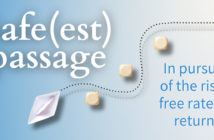by Rushi Shah
At the core of every financing transaction is the capital stack. Representing all sources and uses, the capital stack combines debt and equity in varying proportions, based on the characteristics of each deal. When buying a hotel, equity comes into the transaction. When refinancing, equity typically goes out. In either situation, debt and equity are the brick and mortar that build every capital stack.
What is the difference between senior and subordinate debt?
The debt portion of the capital stack may have multiple layers at various levels of risk and return for capital sources. The hierarchy of position determines who has first rights to the cash-flow waterfall, as well as the real estate itself in the event of default. It is particularly important within distress situations. At the top of the stack, and usually representing the largest portion, is senior debt. Senior lenders are first in line to be repaid, so their risk is lower. As a result, senior debt sources are plentiful and short and long-term money is attractively-priced. Any debt behind a senior loan and in between senior debt and equity, is subordinate, or mezzanine debt. Mezzanine debt investors must get in line for repayment after the senior debt.
I want to increase my leverage above my debt threshold, what are my options?
A well-located, good-quality, cash-flowing hotel can support up to 65 percent of value in the form of senior debt. Instead of adding equity, but on a case-by-case basis, your intermediary can increase your leverage from 65 percent to 75 percent (80 percent very case-by-case) by layering a subordinate, mezzanine loan, in between the senior debt and equity. Anything skyward of 75 percent falls into the equity bucket.
Securing mezzanine debt isn’t easy and the quality of the hotel owner or developer (the transaction sponsor) matters. First, there is only a small pool of mezzanine lenders. Second, because they have the most skin in the game, senior debt lenders often control who is allowed behind them in the capital stack. This is because if the borrower defaults on the loan, the mezzanine lender becomes the equity holder and takes over the senior debt payments. An inter-creditor agreement is negotiated upfront to clearly define each parties’ rights and responsibilities. However, bringing the parties together is a good example of where the right intermediary can be what gets you to the closing table. Sometimes one lender may prefer to provide both the senior and mezzanine pieces.
How is mezzanine debt structured and is it hard to get?
Because mezzanine lender’s repayment risk is higher, their internal rate of return (IRR) hurdle is 12 percent to 18 percent, compared to 9 to 12 percent IRR required by senior lenders. Most won’t even come to the table unless loan amounts are above $10 million, typically cap terms at two to three years and require one of two exit strategies. In the first, the mezzanine product goes behind a 10-year permanent loan, is fully-amortizing and self-liquidates down to zero. In the second, the subordinate loan sits behind a bridge loan and requires a balloon after the mezzanine loan’s term ends – increasing the risk that the borrower will be able to refinance to either permanent debt, a bridge loan or another mezzanine loan. Mezzanine loans behind bridge loans typically cannot be used as cash-out mechanism, except in some cases for larger transactions that are upwards of $100 million.
After senior and mezzanine debt, how do I complete 100 percent of my capital stack?
In the context of a deal, debt is like being in a relationship with the lender and equity is like getting married to the partner. To take leverage above 75 percent or 80 percent you will need some form of equity. Transaction times for sourcing pure equity are long and bring the added complexity of answering to multiple stakeholders. In addition, you typically have to share the profits with your equity partners above a certain threshold, minimizing your control and adding to expense. In many cases, placing debt on another stabilized property and using the cash out to purchase or refinance your other property, is easier and less expensive than a mezzanine loan or sourcing equity. However you build your capital stack, having an experienced intermediary or investment banker guiding you is critical to securing optimal terms, and protecting your ongoing cash flow and profits at sale or refinance.




